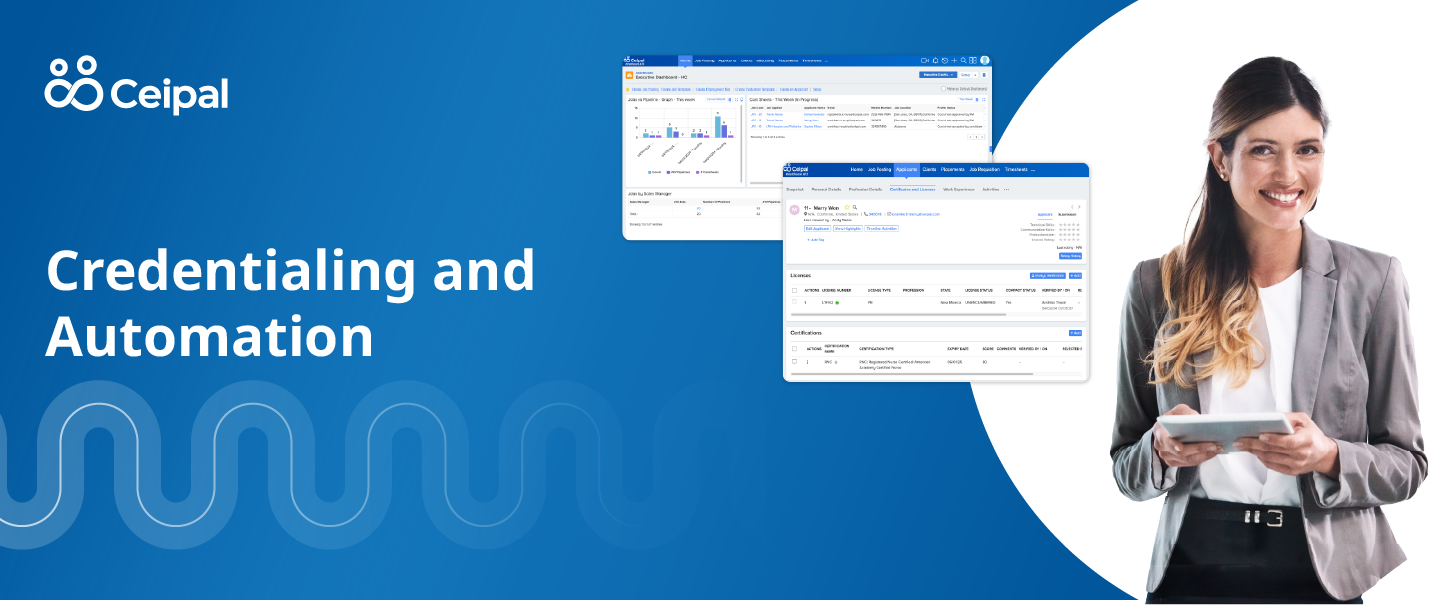In healthcare staffing, credentialing stands as a crucial process to ensure that healthcare professionals possess the necessary qualifications, experience, and licenses to deliver safe and quality patient care. This intricate procedure involves verifying and assessing various aspects of a healthcare professional’s background, from education and training to licensure and certifications.
While essential for maintaining regulatory compliance and patient safety, the credentialing process can often be complex and time-consuming, posing challenges for staffing agencies and healthcare organizations alike.
In recent years, the advancement of technology has changed the way credentialing is handled, offering automated solutions that streamline workflows, reduce manual errors, and accelerate the placement of qualified professionals.
Comprehensive Evaluation
Credentialing is arguably the most significant step in hiring and placing healthcare workers, and automating processes is critical to ensuring efficiency and compliance. Credentialing serves as a comprehensive evaluation process, encompassing five key components:
- Verification of Education and Training: Healthcare professionals must undergo rigorous education and training to acquire the necessary skills and knowledge for their roles. Credentialing involves verifying academic credentials, degrees, diplomas, and specialized training programs to ensure that individuals possess the requisite qualifications.
- Licensure and Certification Validation: Healthcare practitioners are required to hold valid licenses and certifications to practice in their respective fields and jurisdictions. Credentialing involves verifying the authenticity and status of licenses, registrations, and certifications, confirming compliance with regulatory requirements.
- Professional Experience Assessment: Evaluating a healthcare professional’s prior work experience is essential for assessing their proficiency and suitability for specific roles. Credentialing may also involve verification of employment history, clinical experience, and any specialized skills or areas of expertise.
- Background Checks and Screening: Maintaining patient safety and trust is paramount in healthcare staffing. Credentialing includes conducting thorough background checks, criminal history screenings, and drug testing to ensure the integrity and reliability of healthcare professionals.
- Ongoing Monitoring and Compliance: Credentialing is not a one-time process but rather an ongoing endeavor to ensure continuous compliance with regulatory standards and organizational policies. Monitoring professionals’ credentials for expiration dates, renewals, and any disciplinary actions is vital for maintaining quality standards.
Benefits of Automation
While traditional manual methods of credentialing are labor-intensive and prone to errors, automated healthcare credentialing solutions offer the following benefits:
- Efficiency and Time Savings: Automation streamlines credentialing workflows, reducing the time and effort required to verify and validate credentials. By automating repetitive tasks and using intelligent algorithms, staffing agencies can expedite the placement process and meet client demands more rapidly.
- Enhanced Accuracy and Compliance: Automated systems minimize the risk of errors associated with manual data entry and documentation. By centralizing credentialing data and implementing standardized processes, organizations can ensure consistency, accuracy, and adherence to regulatory requirements.
- Improved Candidate Experience: Quick and efficient credentialing processes contribute to a positive candidate experience, fostering trust and satisfaction among healthcare professionals. By minimizing delays and facilitating seamless onboarding, staffing agencies can attract top talent and retain valuable candidates.
- Cost-effectiveness: Automating credentialing processes eliminates the need for extensive paperwork, manual record-keeping, and labor-intensive tasks, resulting in cost savings for staffing agencies and healthcare organizations alike. By optimizing resource allocation and reducing administrative overhead, automated solutions offer a more sustainable and economical approach to credentialing.
Navigate Credentialing With Confidence
Healthcare credentialing ensures that professionals meet the necessary standards and qualifications to deliver safe and effective patient care. By embracing automated credentialing, staffing agencies and healthcare organizations can streamline these processes, enhance efficiency, and expedite placements—all while maintaining compliance with regulatory requirements.
As technology continues to evolve, healthcare staffing professionals must leverage it to navigate the complexities of credentialing with confidence and efficiency.









